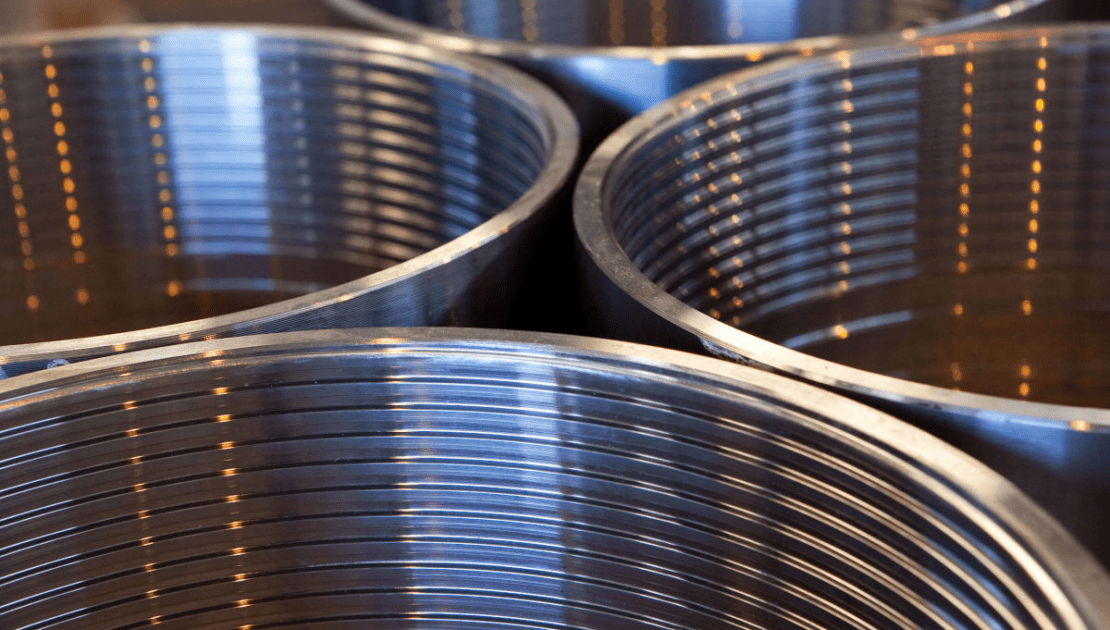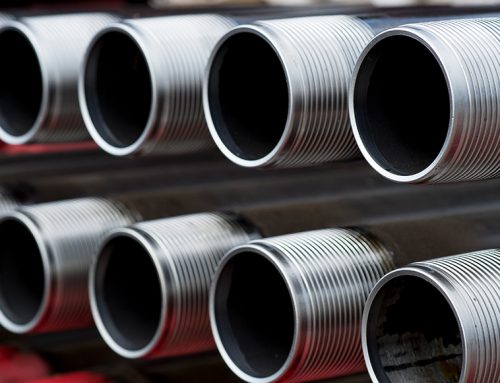What are premium connections?
After the standardization of API connections in the 1920s and the introduction of buttress connections in the 1950s, the 1960s and 1970s saw the development of premium connections begin to take off amongst many established manufacturers. This was in response to a growing demand for connections that could support horizontal and deviated wells, perform at greater depths, and withstand higher temperatures and pressures. These manufacturers began to develop their own proprietary connection designs, including US Steel’s USS Liberty™, JFE’s JFEBEAR™, and TMK’s TMK UP™, with each permeation going through three phases of development:
Phase One: Developing Connection Geometry to Withstand Forces
Having identified target performance, unique thread shapes are developed to promote enhanced tension, compression, and torque resistance on a case-by-case basis. These designs are strengthened by metal-to-metal seals, which create a more gas-tight seal. This addition removes the need for reliance on thread form or thread compound for sealing.
Phase Two: Extrapolating Design to a Variety of Sizes and Grades
Once the target performance is reached, the design is extrapolated for testing against various sizes and grades to determine its effectiveness. Most manufacturers will follow a product line concept to confirm sealability performance among a wide size and weight range, where the thicker and thinner side on a representative size is confirmed by both physical test and the seal energy (contact pressure area), calculated by FEA
Phase Three: Testing According to Standards Followed by Field Tests
There are a number of standards governing the appropriate testing of connections, which will be explored in more detail below. These standards first came into effect in the 1990s, and have grown progressively more severe over the last 30 years to ensure safety and consistency. By meeting the requirements of these standardized tests, as well as field tests, end-users can be confident in the quality of the finished product,
Using premium connections
Unlike API connections, premium connections feature a streamlined internal profile that reduces turbulence and promotes better flow. This design is further improved by the inclusion of an internal or external torque shoulder that serves as a positioning stop during make up, which allows for controlled torque application while limiting hoop stress and galling when compared to API connections. The shoulder is typically adjacent to the metal-to-metal seal, and the action of the shoulders engaging energizes the sealing surfaces to form a gas-tight seal. The metal-to-metal seal prevents internal or external pressure leakage, a feature that is independent of the threads. This means the thread form does not need to be relied upon for sealability, so it can be tailored to function in specific applications, without having to form a seal. Because they don’t feature a metal-to-metal seal, API connections are limited to the integrity of the thread compound and are not recommended for gas applications.
OCTG industry standards
In the late 1990s, physical testing requirements began to have some standardization through the introduction of API 5C5. Then, in 2002, end-users and manufacturers agreed to follow the ISO 13679 protocol, which created connection application levels (CAL) with increasing severity. CAL IV was the most rigorous and extreme test, putting connections through various make and break cycles, heating and cooling cycles, and multiple cycles around the VME in all four quadrants. Revisions to ISO 13679 were put forward in 2009 and 2011 which did not pass the voting approval stage. API took over the editing of the document and API RP 5C5 was released in 2017. This was then followed by ISO 13679 in 2019, which is similar. The test specifications aim to increase the severity of testing to meet more stringent global standards, due to the increasing pressures, temperatures, & depths required for OCTGs.
Applications
As outlined previously, the inclusion of metal-to-metal seals in premium connections removes the need for the thread form to be the sole means of ensuring the integrity of the seal. As a result, the thread design can be customized to best suit the specific application for which it will be employed. For example, specific thread forms, such as wedge or dove-tail designs, could be used to achieve higher torques, while hooked thread designs allow for increased tension/bending. There is also the option for the threads to be designed to aid stabbing and running in the field.
Explore our Pipesales global marketplace today to find a premium connection that best suits your project needs.






